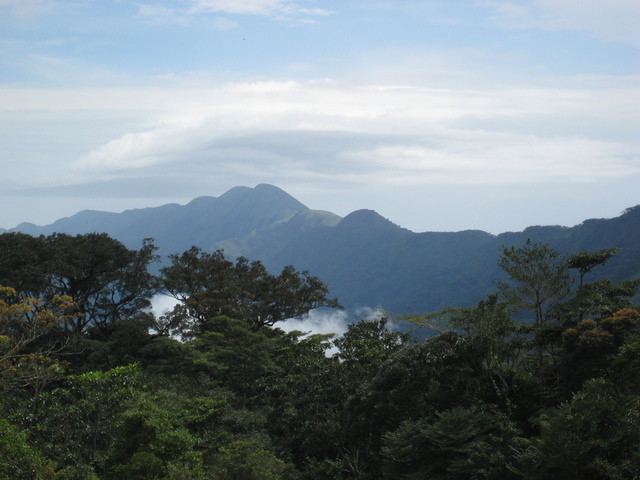Criteria ix, x Reference no. 155 Area 175.4 km² | Type Natural Designated 1981 (5th session) Phone +213 551 43 13 91 | |
 | ||
State Party Guinea and Côte d'Ivoire Similar Mount Richard‑Molard, Comoé National Park, Taï National Park, Manovo‑Gounda St Floris National, Salonga National Park | ||
Mount Nimba Strict Nature Reserve is a protected area and UNESCO World Heritage Site located in both Guinea and Côte d'Ivoire, extending over a total of area of 17,540 hectares, with 12,540 hectares in Guinea, and 5,000 hectares in Côte d'Ivoire. The reserve covers significant portions of the Nimba Range, a geographically unique area with unusually rich flora and fauna, including exceptional numbers of single-site endemic species, such as viviparous toads, and horseshoe bats. Its highest peak is Mount Richard-Molard at 1,752 m (5,750 ft), which is the highest peak of both countries.
Contents
Mount nimba strict nature reserve
History
The strict nature reserve was established in 1943 by Order No. 4190 SE/F in Côte d'Ivoire and in 1944 by decree in Guinea. The Guinean part was accepted as a biosphere reserve in 1980. Both reserves were combined to form one World Heritage Site in 1981 (Guinea) and 1982 (Côte d'Ivoire). Iron-ore exploration for mining in the most vulnerable montane zone started in 1982, the reserve was listed as UNESCO World Heritage Site in danger since then. For the sake of an improved protection, a conservation management centre is being built by Guinean Parks Foundation. The project was approved by the Guinean Government and CEGENS.
Geography
The Nimba Range is a narrow ridge extending approximately 40 km long, with an orientation of northeast-southwest; it forms a part of the southern extent of the Guinea Highlands. Its highest peak is Mount Richard-Molard at 1,752 m (5,750 ft). Other peaks include Grand Rochers at 1694 m (5558 ft), Mont Sempéré at 1682 m (5518 ft), Mont Piérré Richaud at 1670 m (5479 ft), Mont Tô at 1675 m (5495 ft), and Mont LeClerc 1577 m (5174 ft). All of them are located in the Guinean part of the reserve. There are about fifty springs, including the origins of the Cavally, Cestos, and Sassandra Rivers. Mining of top-quality iron-ore poses the major threat to the unique geomorphology and wildlife.
Climate
The Nimba Range has a sub-equatorial montane climate. Temperature changes extremely with altitude, with a daytime maximum ranging between 24 °C and 33 °C, and the nightly minimum can fall below 10 °C. Some parts of the reserve receive significantly less precipitation, due to rain-shadow effect of the high ridge. In general, southern slopes are moister than the leeward northern ones which are affected by dry Harmattan wind from the Sahara. The Nimba Range, as well as the reserve has exceptional microclimatic diversity.
Ecology
Mount Nimba Strict Nature Reserve lies within Guinean Forests of West Africa Biodiversity Hotspot. It harbours an especially rich flora and fauna, and it is the home of more than 2000 vascular plant species, 317 vertebrate species, 107 of which are mammals, and to more than 2,500 invertebrate species. The reserve is a subject of biological surveys, because there are still large numbers of unknown species. Notably endemic vertebrates are Nimba viviparous toad (Nimbaphrynoides occidentalis), Lamotte's roundleaf bat (Hipposideros lamottei), and Nimba otter shrew (Micropotamogale lamottei). Other rare and endangered animals are West African lion (Panthera leo senegalensis), pygmy hippopotamus (Choeropsis liberiensis), zebra duiker (Cephalophus zebra), and western chimpanzee (Pan troglodytes verus) that uses stones as tools.
Terrestrial ecoregions include Western Guinean lowland forest, Guinean montane forest, Guinean forest-savanna mosaic, and West Sudanian savanna. The Nimba Range is a part of a distinct freshwater ecoregion with a high portion of endemic aquatic species.
Terrestrial vegetation varies with altitude and cardinal orientation.
Trivia
One of the four honey buzzards of Kempen-Broek that are equipped with GPS trackers passed this national park on 13 November 2013.
